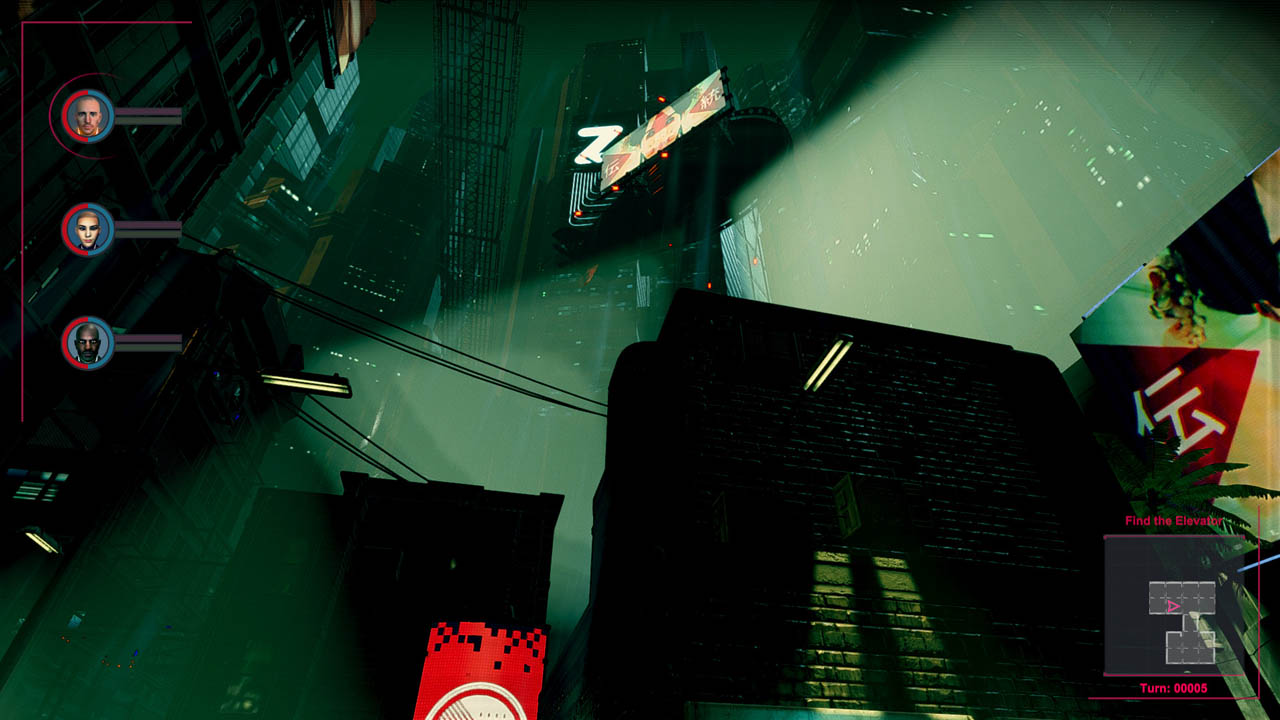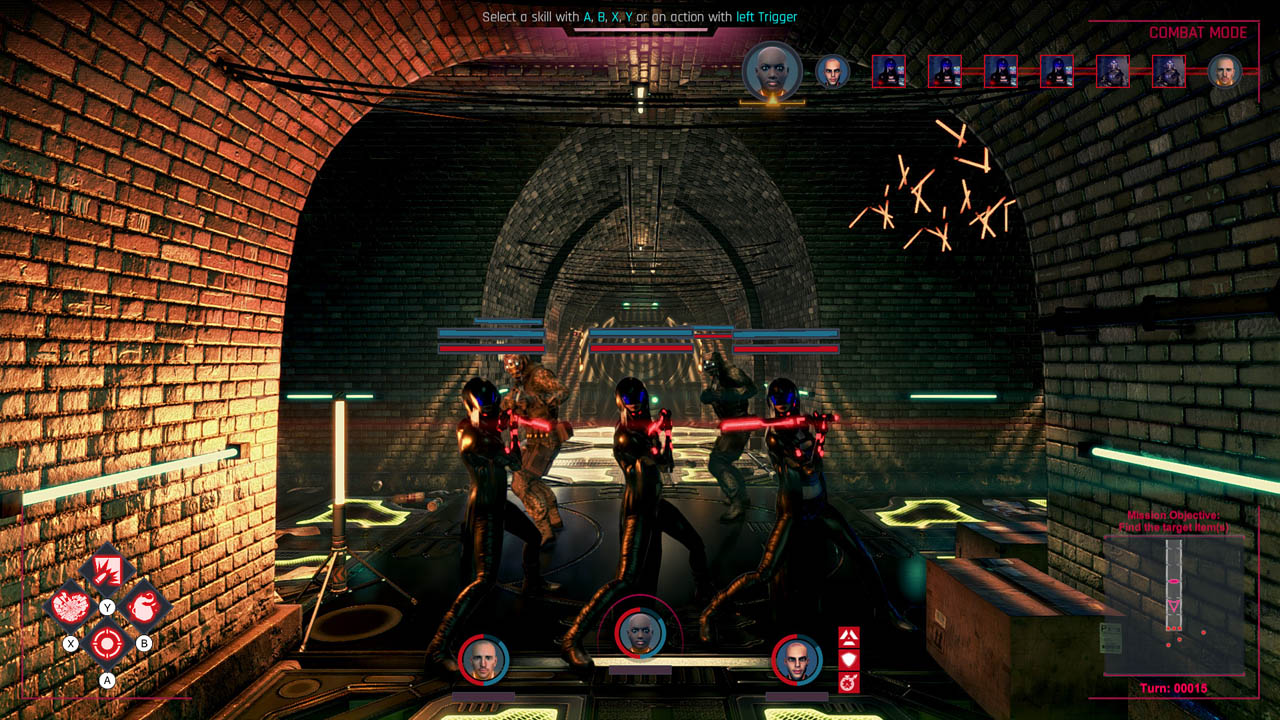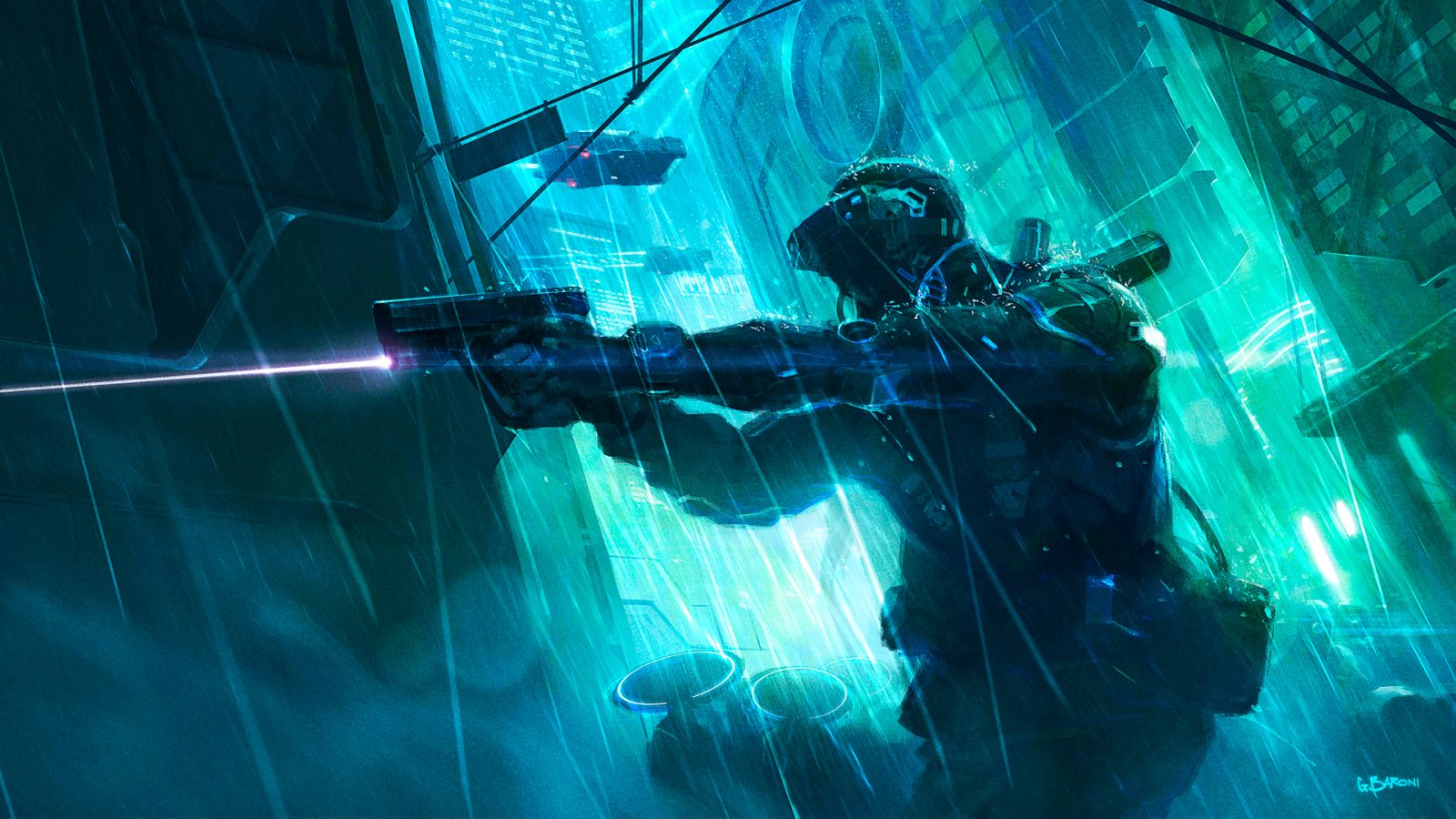Edited by: Tiffany Lillie
Sold My Soul to the Company Store
Conglomerate 451, developed by RuneHeads and published by 1C Entertainment, is a cyberpunk-styled dungeon crawler à la the Legend of Grimrock games. You play the head of a government agency tasked with ridding sector 451 of corporate influence. To do this, you have an endless amount of clones at your disposal to throw against the many gangs and corporate agents in 451’s many districts. These clones can be upgraded, trained, modified, and equipped to give them a professional edge against your opponents.
Pounds of Flesh

Thankfully, you have a seemingly endless supply of bodies to throw at your opponents. Your agents, as of writing, come in five different flavors. Soldiers are your basic all-arounders and can be modified to fit almost any slot you would need of them. Drifters and Splicers are your dedicated supports, dealing in buffs and healing, respectively. Bodyguards are your specialized tanks, able to share and reduce damage with teammates. Infiltrators are your damage dealers, delivering death from range.
These characters are all clones, though. While you can rename them and alter what color their armor glows, differentiating one from another can be difficult. Further, there are only eight skills to choose from for each class, of which you can select four for any given clone. While certain skills are better for certain situations, such as attacks that deal more damage depending on the type of enemy you're facing off against, there are some must-haves that you will likely outfit any iteration of a given clone with. For example, the Soldier is the only character that can regenerate your party's shields, and only with one particular skill.
Battle and Tech
Conglomerate 451's core gameplay loop is very similar to that of Darkest Dungeon. Choose a squad of three agents, select a mission in a given area, and explore until you complete the objective. Your agents have four separate bars that affect their efficacy outside of damage and defense. Health is self-explanatory. Lose it all and the agent goes down, but on top of that are Shields, Pain, and Intoxication. At the time of writing, Intoxication doesn't do anything, but Pain and Shields are essential to manage. Shields are a secondary bar that depletes before Health. There are certain attacks available to both you and your enemies that can penetrate shields before they drain, but the damage is minor most of the time. Pain builds as your agents take Health damage which comes in the form of various traumas, like broken ribs, scratched eyes, broken legs, and the like. While your agent won't die from a preponderance of pain, it does affect how well they fight and I think how likely they are to revive after losing all health. Much like Darkest Dungeon, agents enter a downed state when their Health reaches 0. Another hit in this state is a sure kill, but if this agent makes it a full round without dying, they get to roll the dice to come back with a sliver of health.

You can equip your agents with better skills and tools between missions. A successful mission will almost always grant your surviving agents a skill point to bolster their skills, and you can acquire fund and tech points from lockboxes scattered across the mission maps. These resources can be used to upgrade weapons and armor, outfit agents with cyber prostheses, and drive forward the research you need to make all that happen. Research is necessary to upgrade anything and tends to be rather expensive. Going on a mission advances time by one week, and every research requires one week to finish. You have five different departments that each can host their own research projects for the week. Typically, I found myself with just enough resources to keep my agents healed up and in decent gear and maybe field one research project a week. These can range from the ability to upgrade things to new options for your clones.
The Verdict: Fair
Conglomerate 451 is an Early Access title, and it shows. While I didn't encounter anything horribly game-breaking in the current build, many systems are not yet implemented and some balance issues should be addressed before the final release. Once or twice I found my opponents glitching through walls which made them untargetable, and there is at least one map where you can readily enter the out-of-bounds area. That said, RuneHeads have a roadmap they seem to be following pretty closely, putting out regular updates. While the game could benefit from better instruction, the developers pushed an update during my playtime that added a tutorial for the hacking mini-game. While the hacking mini-game still could use some refinement, it shows that they are slowly making improvements. We'll see what RuneHeads can do with this title in about five to seven months when Conglomerate 451 is slated to release.


